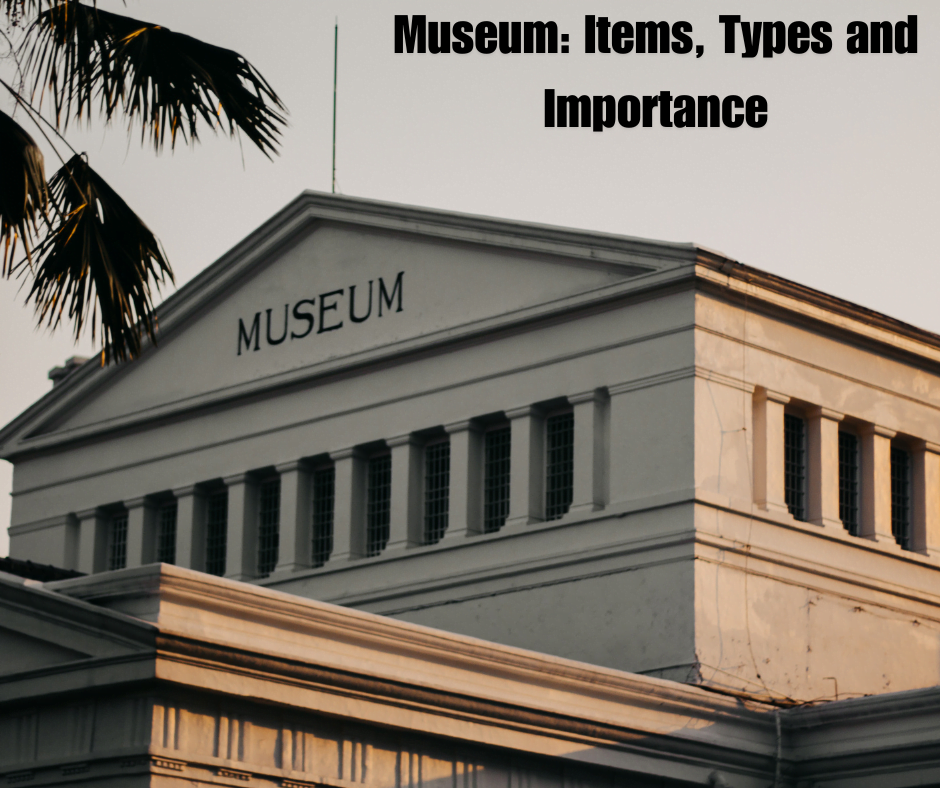Museums are important institutions that preserve and display historical, cultural, and scientific artifacts. They provide insight into the past, showcasing everything from ancient relics to contemporary art and allowing visitors to explore human history and creativity. Art museums house extensive paintings, sculptures, and photography collections, offering a glimpse into different cultures and time periods. Natural history museums captivate with exhibits on dinosaurs, fossils, and the evolution of life on Earth. Many museums feature interactive exhibits that engage visitors in hands-on learning experiences, making education enjoyable and immersive. Specialized museums, such as those focusing on technology, space exploration, or maritime history, cater to specific interests, while ethnographic museums highlight the diverse customs and traditions of societies worldwide. With advancing technology, museums are incorporating digital tools to enhance the visitor experience by offering virtual exhibits and interactive displays. By preserving the past and collecting contemporary works, museums serve as guardians of our shared heritage, making them essential for understanding the human experience and the natural world. Visiting a museum can be a deeply enriching experience, providing knowledge, inspiration, and a deeper appreciation for the complexities of life.

Museums are defined as follows under the International Council of Museums (ICOM, 2007) guidelines:.
“A museum is defined as a permanent, non-profit organization that works to advance society and its development. It is accessible to the public and is dedicated to acquiring, conserving, researching, disseminating, and exhibiting the tangible and intangible cultural heritage of humanity and its surroundings for enjoyment, education, and study.”
Museums house a wide variety of items that reflect different aspects of human history, culture, art, and science. Common items found in museums include:
- Artifacts: Objects from past civilizations, such as pottery, tools, weapons, and jewelry.
- Artworks: Paintings, sculptures, drawings, and other visual art forms.
- Historical Documents: Manuscripts, letters, maps, and official records.
- Cultural Objects: Traditional clothing, textiles, musical instruments, and religious items.
- Fossils and Specimens: Dinosaur bones, ancient plants, and preserved animals in natural history museums.
- Scientific Instruments: Early telescopes, microscopes, and other devices that have contributed to scientific advancements.
- Photographs: Historical photographs that document significant events, people, and places.
- Furniture and Decorative Arts: Antique furniture, ceramics, and other household items from different periods.
- Military Memorabilia: Uniforms, medals, weapons, and other items related to military history.
- Technological Artifacts: Early computers, telephones, vehicles, and other inventions that have shaped modern life.
What are the different types of museums?
There are seven types of Museums
1. Historical Museums
Historical museums are primarily concerned with conserving and presenting artifacts, records, and exhibits of notable historical occasions, cultures, and individuals. By offering insights into the history of places, times, or subjects, they aid tourists in understanding how societies have evolved and how past events have affected the present. Through their collections and educational initiatives, historical museums are essential for maintaining collective memory and promoting a greater awareness of our common past. These historical sites serve as visual aids for historical eras, events, figures, etc. They possess statues, weapons, and other stone and metal artifacts.
2. Archaeological Museum:
An archaeological museum is dedicated to displaying and preserving artifacts uncovered through archaeological excavations. These artifacts are often related to ancient civilizations, historical sites, and prehistoric cultures. The museums provide insights into the daily lives, practices, and technologies of past societies by showcasing items such as pottery, tools, jewelry, and other relics. By interpreting and presenting these artifacts, archaeological museums help visitors connect with humanity’s distant past and understand the evolution of civilizations. They contain all the objects related to history and are usually situated near archaeological sites, like the Moen Jo Daro Museum.
3. General Museum
A general museum holds a wide range of objects, pieces of art, and displays from different disciplines, including history, science, art, and culture. These museums serve as important centers of learning and culture for the communities in which they are located, providing a wide overview of both natural wonders and human achievement. General museums appeal to a wide range of interests by showcasing a diverse range of topics, which makes them interesting and approachable for a large audience. These museums are referred to as multidisciplinary museums because they cover multiple subjects.
4. Military Museum
A military museum is devoted to preserving and showcasing artifacts, weapons, uniforms, and documents associated with the history and evolution of military forces and warfare. These museums typically feature important battles, military strategies, and the experiences of soldiers, offering insights into the impact of war on nations and societies. Through their collections and exhibits, military museums pay tribute to the sacrifices of those who served and educate the public about the intricacies of military history.
5. Fine arts:
Fine arts museums play a crucial role in fostering appreciation for the arts by providing a space for inspiration, education, and cultural enrichment. They are devoted to showcasing and conserving works of visual art, including paintings, sculptures, drawings, and other artistic mediums from various periods and cultures. These museums often feature collections that span from classical to contemporary art, giving visitors the chance to explore the evolution of artistic styles and movements.
6. Science and Technology
A science and technology museum focuses on exploring and exhibiting scientific discoveries, technological innovations, and their impact on society. These museums feature interactive exhibits and hands-on activities, which make complex scientific principles and technological advancements accessible and engaging for visitors of all ages. By showcasing the evolution of science and technology, these museums inspire curiosity and a deeper understanding of the world around us, while also highlighting the potential for future innovations. They contain representative artifacts from the evolution of history, science, and technology, such as dinosaur fossils.
7. National Museum:
A national museum serves as a repository for a country’s most important cultural, historical, and artistic artifacts, representing the nation’s heritage and identity. These museums often house collections that highlight key events, figures, and achievements that have shaped the nation’s history and culture. By preserving and displaying these treasures, national museums play a crucial role in fostering national pride, educating citizens, and promoting cultural understanding both domestically and internationally.
What is the importance of Museum?
Museums are important for several reasons:
- Cultural Preservation: Museums preserve and protect artifacts, artifacts, and historical objects, ensuring that future generations can access and learn from their cultural heritage.
- Teaching and Learning: Museums serve as educational resources, offering exhibits, programs, and interactive experiences that encourage learning and spark curiosity among visitors of all ages.
- Cultural exchange and understanding: By showcasing the diversity of human culture and history, museums promote inter-cultural understanding, tolerance, and appreciation, help bridge differences, and foster a sense of global community.
Museums play a fundamental role in creating vibrant and energized learning communities. As stewards of cultural heritage, information, and ideas, museums and libraries have traditionally played a vital role in helping us experience, explore, discover, and make sense of the world. They transform the process of discovery into long-term resources for reinterpreting the past, particularly in the field of archaeology. Museums serve as the main source of formal and informal education and are knowledge hubs. They are highly attractive places for students, local and foreign researchers, as well as scholars of archaeology, history, the arts, and social science to gain knowledge about these objects from the past.



